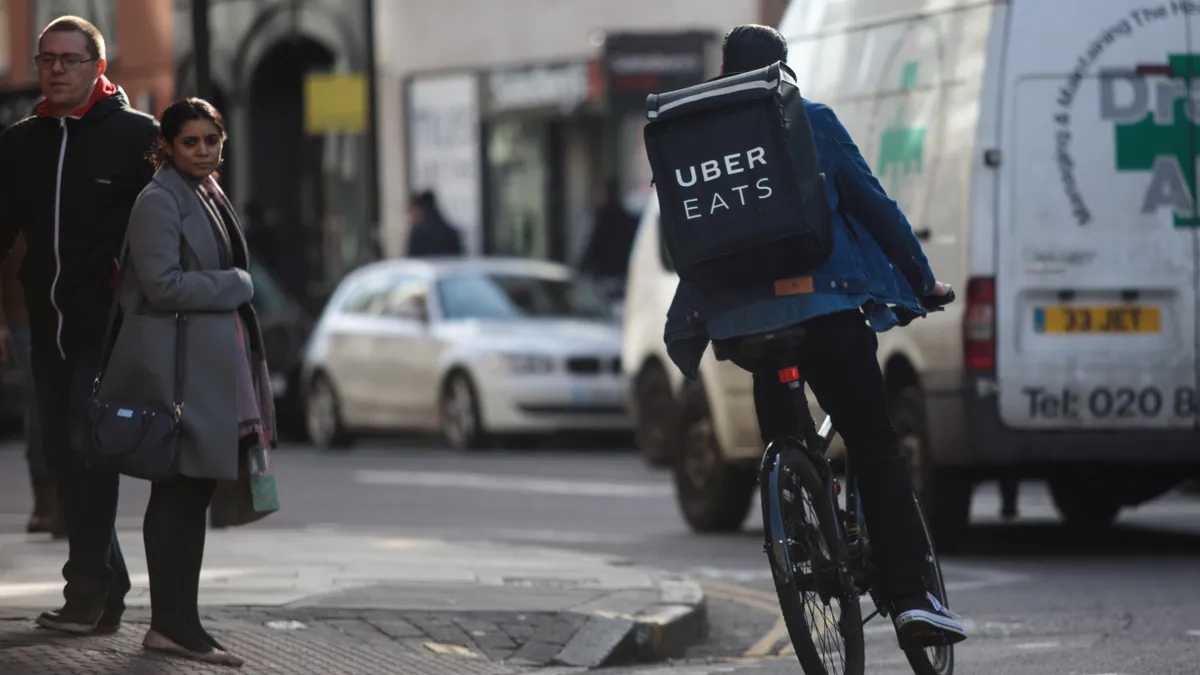Dive Brief:
- Uber on Wednesday launched a new membership program, called Uber One, that bundle its rides, grocery and food delivery services.
- The membership costs $9.99 a month or $99.99 a year and includes 5% off eligible rides and delivery orders on food, grocery, alcohol and more; an unlimited $0 delivery fee on $15-plus food orders and $30-plus grocery orders; priority service with top-rated drivers; $5 in Uber Cash for inaccurate arrival estimates; and access to exclusive promotions and other invite-only experiences.
- This feature rollout follows the April debut of Uber's Pickup and Go service, which allows Uber rides passengers to order and pickup meals and groceries en route to their destination.
Dive Insight:
Uber's latest membership model could increase customer acquisition across its food and grocery delivery arms, as well as deepen loyalty.
More than 10% of new Uber Eats users arrived on the platform through the platform's ride-hailing channel. Uber's ridesharing business completes over 1.4 billion rides each quarter and makes up 68% of the U.S. rideshare market, giving Uber Eats partner restaurants access to an expanded consumer base.
Drawing its massive base of rideshare customers into its foodservice and grocery delivery channels could also give Uber Eats a competitive advantage over DoorDash, Uber Eats' main competitor for U.S. food delivery market share. DoorDash recently launched grocery delivery, but doesn't offer ridesharing. Still, Uber has its work cut out for it if it wants to bridge that market share gap — DoorDash controls 57% of the market compared to Uber Eats at 24%.
A flat-fee membership allows customers to save on food delivery costs, which could encourage adoption. The delivery fee for one Uber Eats order, for example, can range from $0.49 to $7.99 compared to Uber One's $9.99 membership for a month's worth of zero delivery fees on $15-plus orders, Ridesharing Driver reports.
Such incentives could also accelerate growth in Uber's fledgling grocery business, which launched last year. The channel has already added giants like Costco and Albertsons, which have large consumer footprints.
Uber was working to ramp up its Eats business before the pandemic, launching a Rachael Ray virtual kitchen, for example, drone delivery tests and its first airport partnership — moves that were aimed at helping the company achieve profitability. Such diversification helped during the pandemic, when Uber's signature ride-sharing business was down 80% while Eats revenue doubled. During the most recent quarter, Uber reported its first operating profit on an EBITDA basis.













